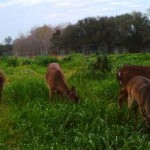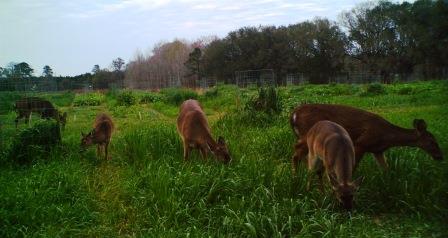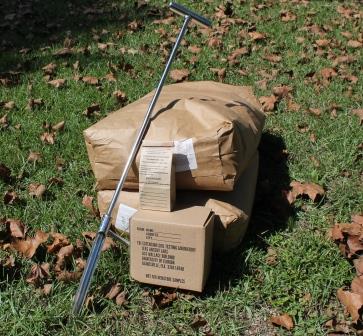
Deer hunting season has begun in Northwest Florida. As hunters venture into the woods and sit for hours on end they have plenty – sometimes too much – time to contemplate what they could have done or should do to make there hunting experiences better. These plans for improvement may involve all kinds of things; if they involve improving underperforming food plots allow me to offer a few points for contemplation.
- Are your plots the optimum size? Small plots, less than one acre, don’t stand much of a chance. If you plant something deer like and there is a substantial deer population in the area the young plants will be “mowed” down before they have time to establish. At best, you’ll create a low growing green carpet. This might make you feel better as a hunter but it’s doing very little in the way of providing nutrition to the deer herd. Deer will get the maximum benefit from multiple plots (2-3 acres in size) that total around 10% of the area you are managing. This scenario is ideal for the deer, it might not be ideal or even feasible for the hunter.
- Are your plots properly fertilized? This is a very common issue with underperforming food plots. That bag of 10-10-10 really doesn’t do much. Hunters who have no farming experience are often amazed and disheartened at how much fertilizer it takes to produce a crop – food plots are simply forage crops. Consult your county’s agriculture agent for assistance with soil testing and fertilizer recommendations for the specific crops you are producing. UF/IFAS fertilizer recommendations for forage crops reference additional applications after a grazing rotation or haying; how does this translate for food plot management? A cool season food plot planted in mid-October will be productive for about six months. During that six months you should apply Nitrogen at least three times, Potassium twice, all required Phosphorus can be applied at planting. This steady supply of nutrients keeps the food plot going throughout the entire growing season. Using slow release or enhanced efficiency fertilizers can simplify this process somewhat, since the number of applications is reduced.
- Did you plant the right crop at the right time? There are lots of choices when it comes to selecting what to plant in your food plots remember plant varieties that are suited to your particular environment not the one that have the prettiest packaging or the most TV commercials. Planting time can be an issue; when cool season crops are planted too late they are unable to establish enough roots and top growth to withstand grazing pressure through the middle of winter when short days and cold temperatures greatly slow growth rates. Even if planted at the correct time most “winter” forages produce the majority of their biomass in the spring, once day length begins to increase.
Hopefully considering these points will help you to improve your food plots. Remember, producing high quality food plots can be a challenging endeavor but the process makes more sense and is less frustrating if you view food plots as long term habitat improvement designed to provide additional nutrition to the deer herd not simply an attractant during hunting season. For more information on any of the topics addressed contact your county’s UF/IFAS Extension Agriculture or Natural Resources Agent.
 0
0


